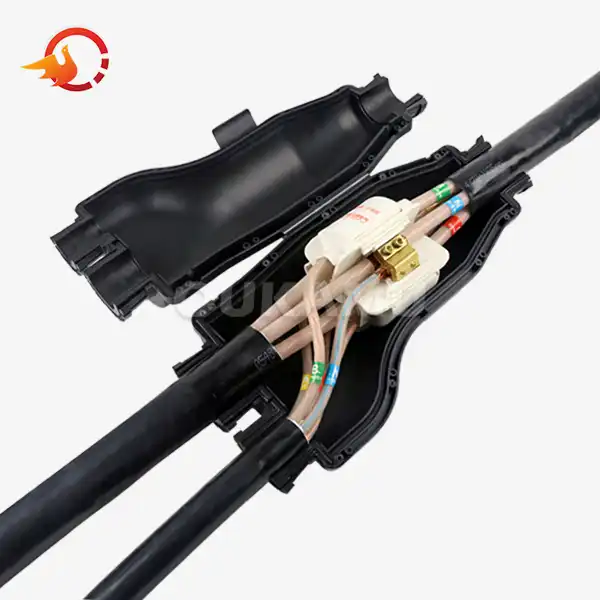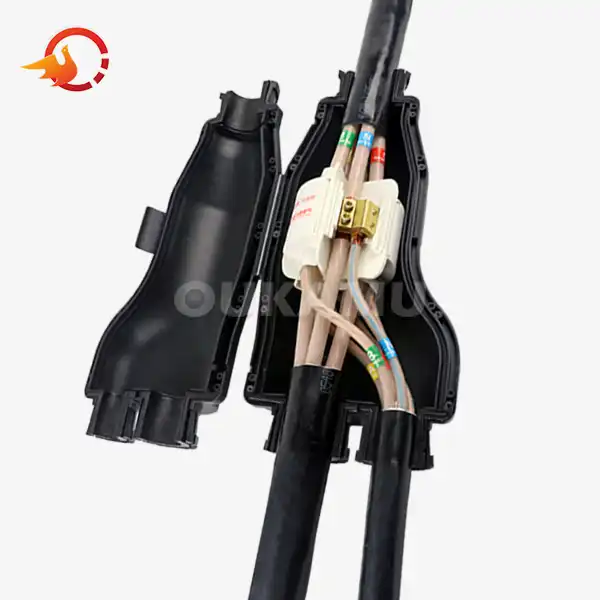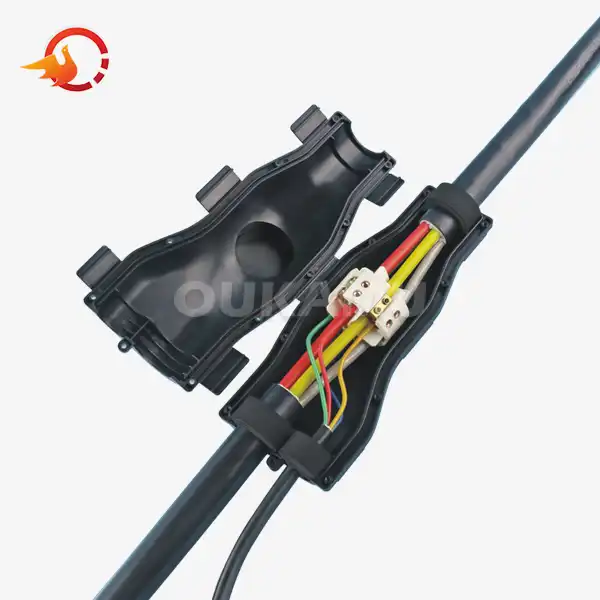Cable Wraps and Fire Protection: Ensuring Safety in Critical Areas
 2025-07-11 07:31:11
View:389
2025-07-11 07:31:11
View:389In today's interconnected world, the safety and reliability of electrical systems are paramount, especially in critical areas where fire hazards pose significant risks. Cable wraps and fire protection solutions play a crucial role in safeguarding these vital infrastructures. This article delves into the importance of cable wraps and fire protection measures, exploring fire resistant cable joints applications, benefits, and the latest advancements in ensuring safety in critical areas.
The Significance of Cable Wraps in Fire Protection
Cable wraps are essential components in fire protection strategies for electrical systems. These specialized materials encase cables and wires, providing an additional layer of defense against fire, heat, and smoke. The primary purpose of cable wraps is to maintain the integrity and functionality of electrical systems during fire incidents, ensuring that critical equipment continues to operate and allowing for safe evacuation procedures.
Types of Cable Wraps
There are various types of cable wraps available in the market, each designed to meet specific fire protection requirements:
- Intumescent Wraps: These wraps expand when exposed to high temperatures, forming a protective char layer that insulates the cables from fire and heat.
- Ceramic Fiber Wraps: Made from high-temperature resistant ceramic fibers, these wraps provide excellent thermal insulation and fire resistance.
- Silicone-based Wraps: Known for their flexibility and ease of installation, silicone-based wraps offer good fire resistance and are suitable for a wide range of applications.
- Composite Wraps: These combine multiple materials to provide comprehensive protection against fire, smoke, and other environmental factors.
Benefits of Using Cable Wraps
Implementing fire resistant cable joints in critical areas offers numerous advantages:
- Enhanced Fire Resistance: Cable wraps significantly increase the fire resistance of electrical systems, preventing rapid spread of flames along cable runs.
- Improved System Integrity: By protecting cables from fire and heat damage, wraps help maintain the functionality of critical systems during emergencies.
- Reduced Smoke Emission: Many cable wraps are designed to minimize smoke generation, improving visibility and reducing toxicity during fire incidents.
- Extended Evacuation Time: The added protection provided by cable wraps can extend the time available for safe evacuation of buildings and facilities.
- Compliance with Regulations: Using appropriate cable wraps helps meet fire safety standards and building codes in various industries.
Fire Protection Strategies for Critical Areas
Ensuring comprehensive fire protection in critical areas requires a multifaceted approach that goes beyond cable wraps. A well-designed fire protection strategy incorporates various elements to create a robust defense against fire hazards.
Fire-Resistant Cable Joints
Fire-resistant cable joints, such as those developed by Xi'an OUKAMU, play a crucial role in maintaining the integrity of electrical systems during fire events. These specialized joints are designed to withstand high temperatures and prevent the spread of fire along cable runs. Key features of fire resistant cable joints include:
- High Temperature Resistance: Capable of withstanding temperatures up to 1000°C
- Excellent Insulation Properties: Maintaining electrical insulation even under extreme conditions
- Seamless Integration: Designed to work in conjunction with cable wraps and other fire protection measures
- Versatility: Suitable for various cable types and sizes, including main cables of 16-50mm and branch cables of 2.5-35mm
Compartmentalization and Fire Barriers
Implementing effective compartmentalization strategies is essential for containing fires and preventing their spread in critical areas. This approach involves:
- Fire-Rated Walls and Floors: Installing barriers that can resist fire for specified periods, typically ranging from 30 minutes to 4 hours.
- Fire Doors and Dampers: Using specially designed doors and ventilation dampers that automatically close during fire events to maintain compartment integrity.
- Cable Penetration Seals: Employing fire-resistant sealants and materials to close gaps around cable penetrations through walls and floors.
Active Fire Protection Systems
Complementing passive measures like cable wraps and compartmentalization, active fire protection systems play a vital role in detecting and suppressing fires:
- Fire Detection Systems: Implementing advanced smoke and heat detectors to provide early warning of fire incidents.
- Automatic Sprinkler Systems: Installing water-based or specialized suppression systems to control and extinguish fires quickly.
- Clean Agent Suppression: Utilizing gas-based fire suppression systems in areas where water damage is a concern, such as data centers and electrical rooms.
Advancements in Cable Wrap Technology and Fire Protection
The field of cable wraps and fire protection is continuously evolving, with new technologies and materials emerging to enhance safety in critical areas.
Nanotechnology in Fire Protection
Researchers are exploring the use of nanotechnology to develop more effective fire resistant cable joints materials:
- Nano-enhanced Intumescent Coatings: Incorporating nanoparticles into intumescent formulations to improve their fire-resistant properties and durability.
- Carbon Nanotube Reinforced Wraps: Utilizing carbon nanotubes to create ultra-strong and highly heat-resistant cable wraps.
- Self-healing Fire Protection Materials: Developing materials that can repair minor damage autonomously, maintaining their protective properties over time.
Smart Fire Protection Systems
The integration of smart technologies is revolutionizing fire protection strategies in critical areas:
- IoT-enabled Monitoring: Implementing sensors and connected devices to continuously monitor the condition of cable wraps and fire protection systems.
- AI-powered Risk Assessment: Utilizing artificial intelligence to analyze data and predict potential fire risks in real-time.
- Adaptive Suppression Systems: Developing fire suppression systems that can adjust their response based on the specific characteristics of a fire event.
Sustainable Fire Protection Solutions
As environmental concerns gain prominence, the fire protection industry is focusing on developing more sustainable solutions:
- Eco-friendly Fire Retardants: Creating fire-resistant materials that minimize environmental impact and toxicity.
- Recyclable Cable Wraps: Designing cable wraps that can be easily recycled at the end of their life cycle.
- Energy-efficient Fire Protection Systems: Developing systems that maintain high levels of protection while reducing energy consumption.
Conclusion
Cable wraps and fire protection measures are indispensable components in ensuring safety in critical areas. As technology advances and regulatory requirements evolve, the importance of implementing comprehensive fire protection strategies becomes increasingly evident. By combining passive measures like fire-resistant cable joints and wraps with active systems and innovative technologies, organizations can significantly enhance the safety and resilience of their critical infrastructure.
For those seeking cable joints suppliers in cable connection and fire protection, Xi'an OUKAMU Electric Co., Ltd. offers a range of specialized products designed to meet the highest safety standards. With 17 years of expertise in branch cable connectors and pioneering technologies, OUKAMU is at the forefront of developing safe, reliable, and economical cable connection solutions for various industries. For more information about their innovative products and services, please contact them at info@okmbranchcable.com.
References
1. National Fire Protection Association. (2021). NFPA 70: National Electrical Code. Quincy, MA: NFPA.
2. Underwriters Laboratories. (2020). UL 1666: Standard for Test for Flame Propagation Height of Electrical and Optical-Fiber Cables Installed Vertically in Shafts. Northbrook, IL: UL.
3. International Electrotechnical Commission. (2019). IEC 60331: Tests for electric cables under fire conditions - Circuit integrity. Geneva, Switzerland: IEC.
4. Fire Protection Research Foundation. (2022). "Advancements in Cable Fire Protection Technologies: A Comprehensive Review." Quincy, MA: FPRF.
5. Journal of Fire Sciences. (2023). "Smart Fire Protection Systems for Critical Infrastructure: Current Trends and Future Directions." Volume 41, Issue 3.















